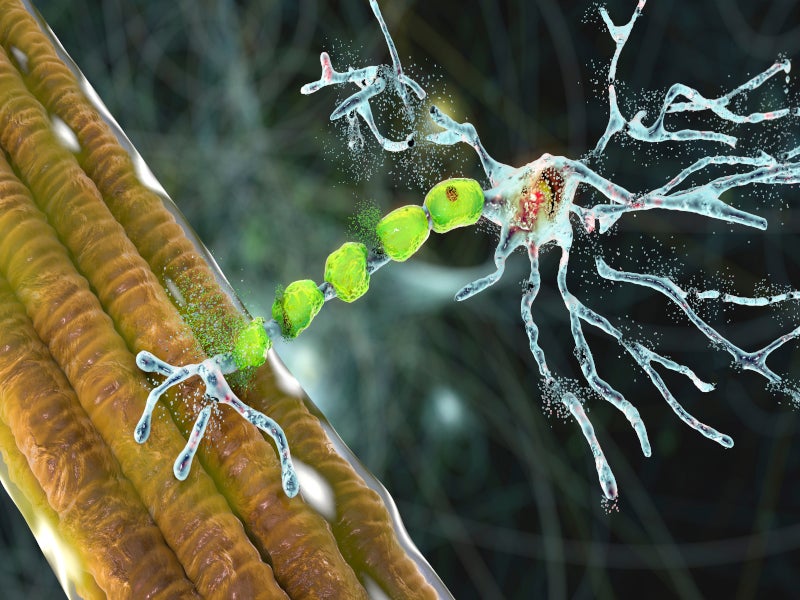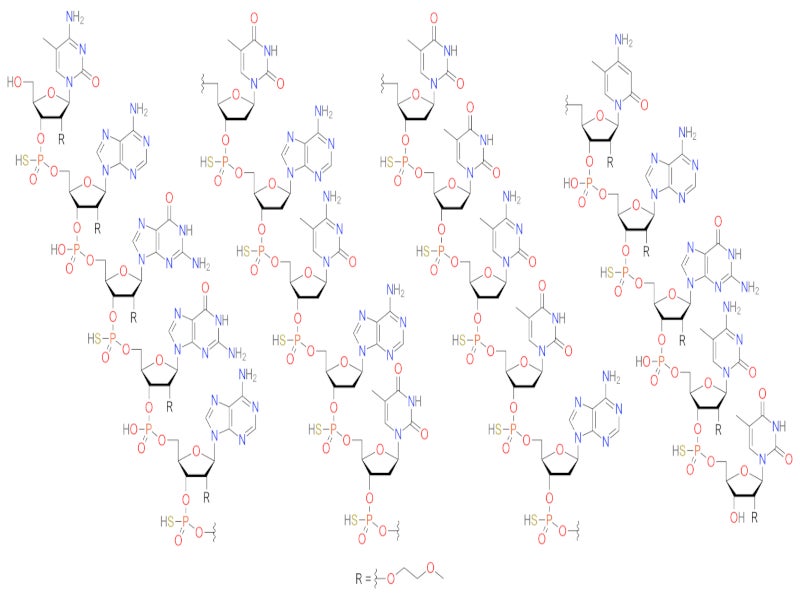QALSODY® (tofersen) is a targeted therapy designed for the treatment of amyotrophic lateral sclerosis (ALS) in adults carrying a superoxide dismutase 1 (SOD1) gene mutation.
The innovative treatment was discovered by Ionis Pharmaceuticals and subsequently licensed to Biogen, a biotechnology company based in the US.
QALSODY is available as 100mg/15ml (6.7mg/ml) clear and colourless-to-slightly yellow solution in a single-dose vial for intrathecal [into the fluid-filled space between the thin layers of tissue that cover the brain and spinal cord] injection.
Regulatory approvals for QALSODY
QALSODY® was first approved in the US and Europe in December 2018, following evidence of its ability to reduce plasma neurofilament light chain (NfL), a biomarker indicative of neurodegeneration.
The US Food and Drug Administration (FDA) accepted a new drug application (NDA) for tofersen for the treatment of ALS and granted it priority review in July 2022. Subsequently, the FDA granted accelerated approval to tofersen in April 2023. Continued approval of the drug for the indication may depend on the outcomes of confirmatory trials.
The drug received marketing authorisation from the European Commission (EC) under exceptional circumstances for the same indication in May 2024, following a favourable recommendation from the Committee for Medicinal Products for Human Use (CHMP) of the European Medicines Agency (EMA) in February 2024.
The drug also holds orphan drug and fast track drug designations.
Amyotrophic lateral sclerosis causes and symptoms
ALS, also known as motor neuron disease (MND), is a rare and invariably fatal neurodegenerative condition characterised by the deterioration of motor neurons in the brain and spinal cord, which are crucial for voluntary muscle control.
Affected individuals suffer from muscle weakness and wasting, progressively losing their ability to move, speak, eat and ultimately breathe. On average, individuals with ALS have a life expectancy of three to five years following the onset of symptoms.
Genetic mutations play a significant role in ALS, with the SOD1 gene mutation accounting for 2% of the estimated 168,000 global cases of ALS. SOD1-ALS, an ultra-rare and uniformly fatal variant of ALS, affects approximately 330 individuals in the US and fewer than 1,000 across Europe.
In patients suffering from SOD1-ALS, mutations in the SOD1 gene lead to the production of a misfolded and toxic SOD1 protein variant. This aberrant protein triggers the degeneration of motor neurons, culminating in escalating muscle weakness, functional impairment and death.
QALSODY’s mechanism of action
QALSODY (tofersen) is an antisense oligonucleotide (ASO) created to bind to SOD1 mRNA, reducing the production of the SOD1 protein and potentially slowing disease progression in patients with SOD1 mutations.
Clinical trials of QALSODY
The approval of QALSODY® is based on a comprehensive body of evidence, encompassing its targeted mechanism of action, biomarker assessments and clinical trial outcomes.
The pivotal Phase III VALOR study, a randomised, double-blind, placebo-controlled clinical trial, involved 147 patients with ALS. A total of 108 participants were randomised in a 2:1 ratio to receive either 100mg of QALSODY or a placebo over 24 weeks.
The primary measure of effectiveness was the variation from the initial assessment to Week 28 in the ALS Functional Ratings Scale-Revised total score. While the data leaned favourably towards tofersen, the difference did not reach statistical significance. However, at Week 28, patients treated with tofersen exhibited a 55% reduction in mean plasma NfL levels, in contrast to a 12% increment observed in the placebo group.
The common adverse reactions observed in patients during the trial include back pain, limb pain, fatigue, muscle and joint pain, fever and elevated protein and/or white blood cell counts in the cerebrospinal fluid.
The ongoing Phase III ATLAS study, which examines the effects of tofersen in individuals with presymptomatic SOD1-ALS, is anticipated to act as the confirmatory trial for the drug’s full approval.






